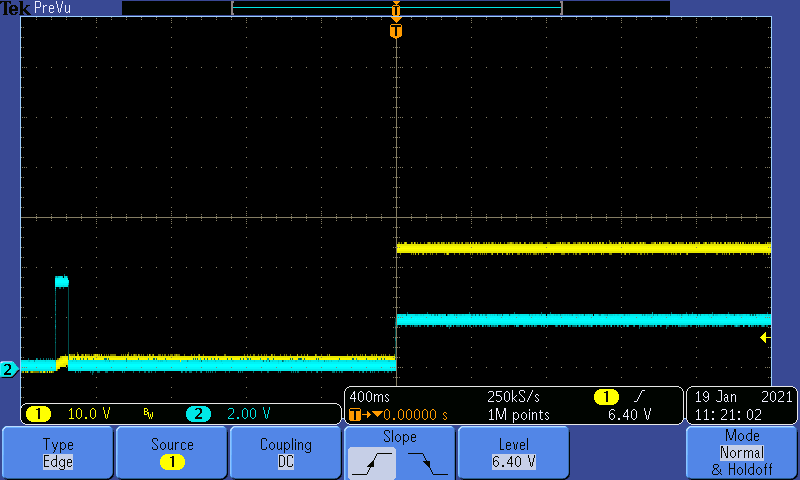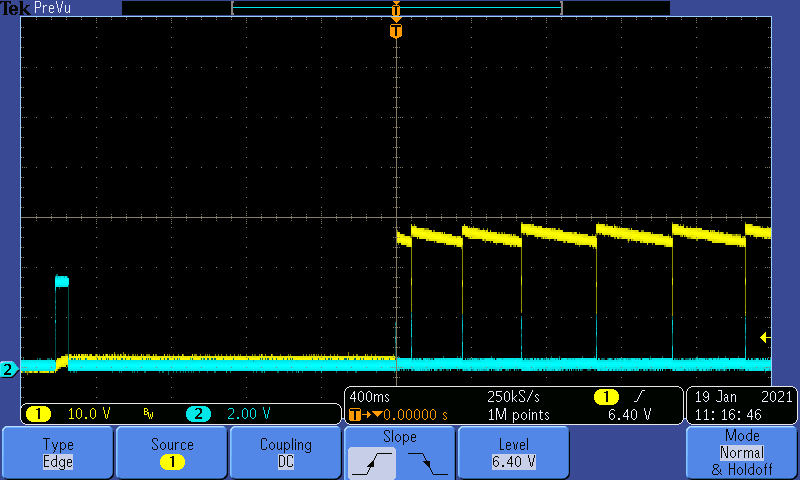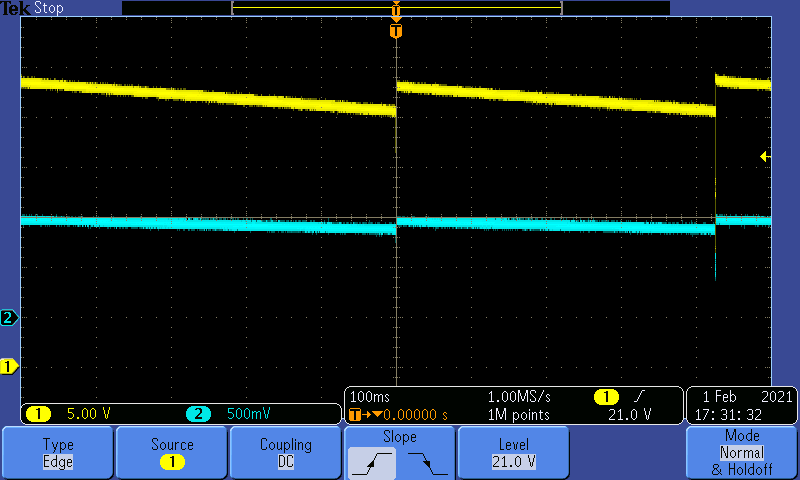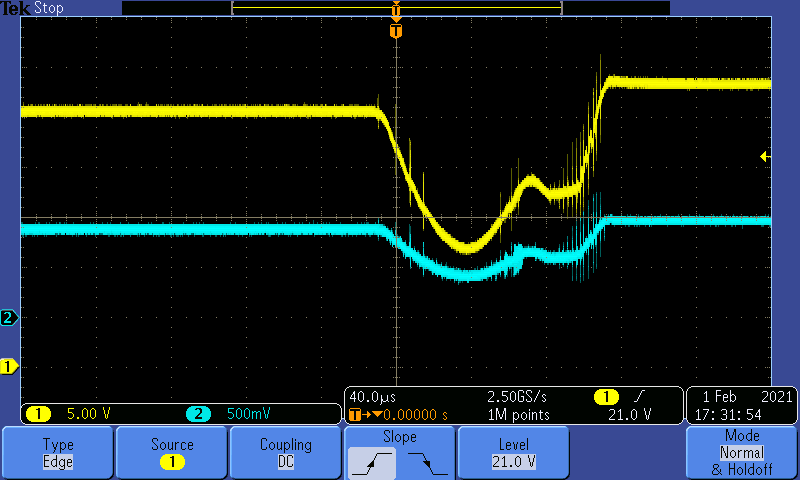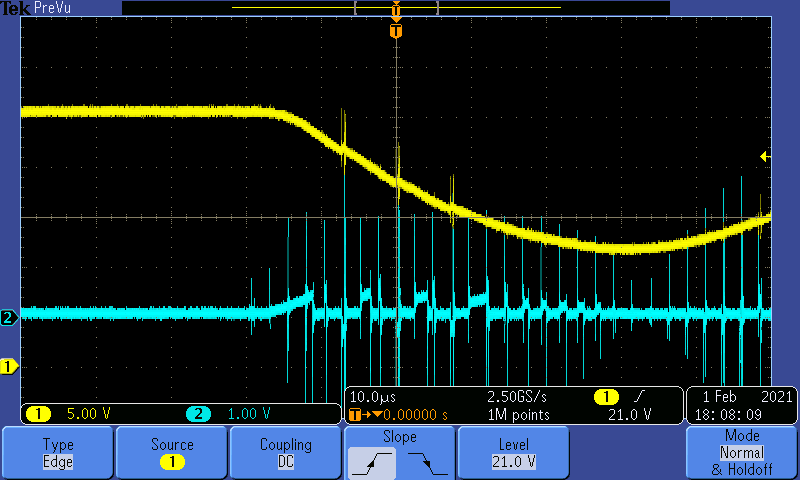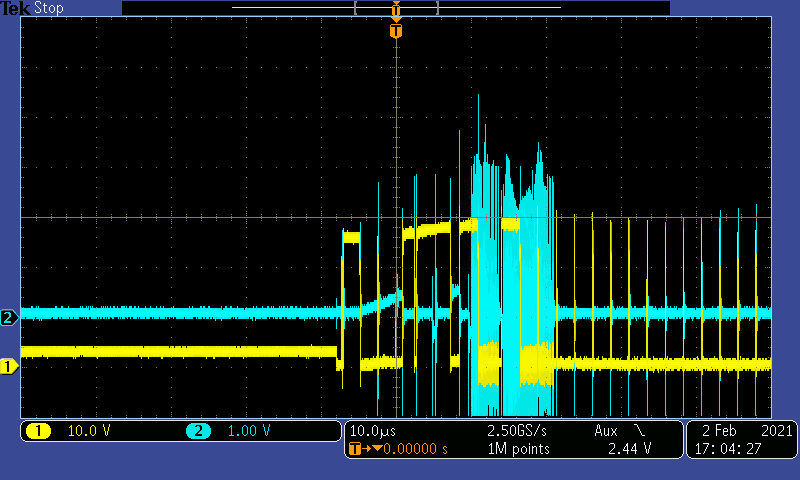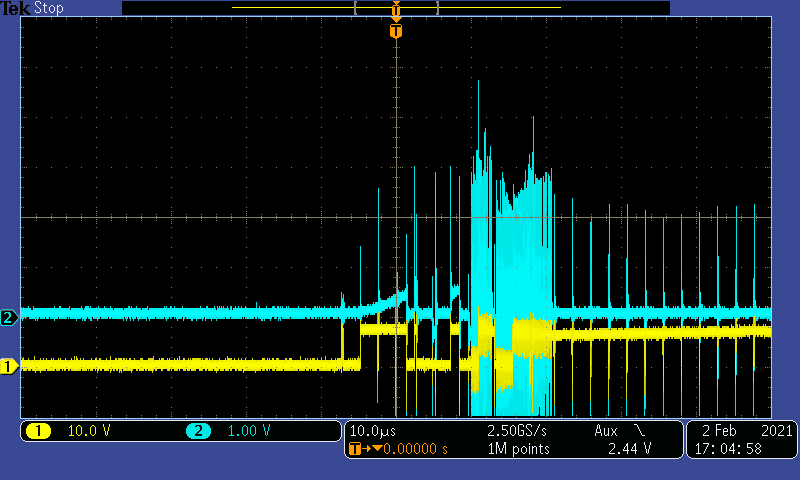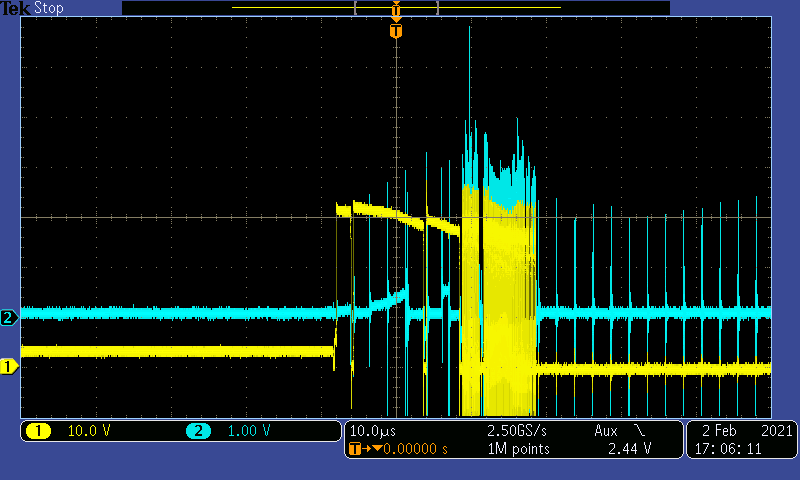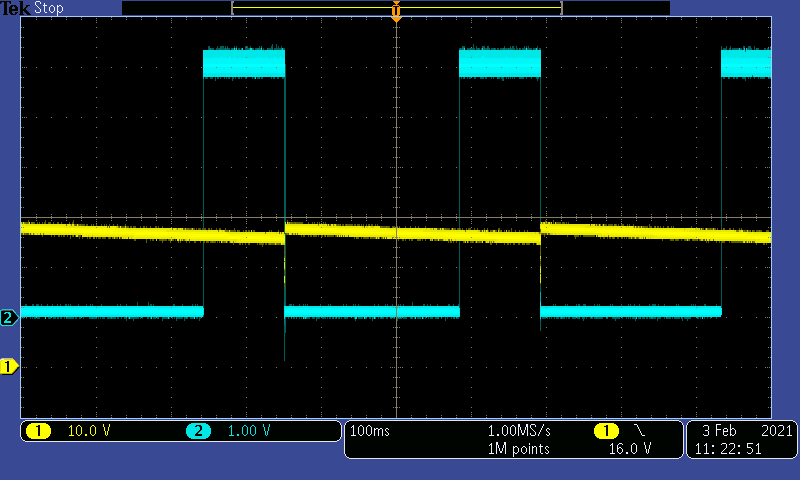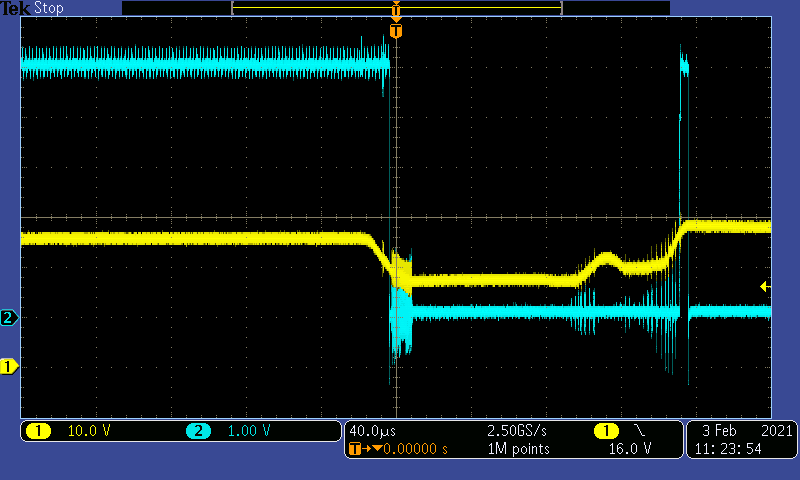I need to take an input voltage of 14V to 24V and convert it to an output of 24V at up to 8A using the LM5175. I used an (almost) identical layout as the TI demo board (a 6-layer design). When the board is powered up, depending on the input voltage, I either get proper operation (with a clean, solid 24V output) or the output overshoots by 5 - 10V and ramps down to 24V whereupon it again overshoots and ramps back down. The period of the ramp ranges from about half a second to several seconds.
Here is the schematic:
Note that the problem occurs even when the adjustable output feature is disabled. That is, I have removed R195, and set R194 to 16.5K.
WORKING: Here is what the output voltage (yellow trace) looks like when the unit is powered-up from 18V. The blue trace is the COMP pin.
NON-WORKING: Here is what the output voltage (yellow trace) looks like when the unit is powered up from 21V. The blue trace is the COMP pin.
Can anyone tell me what is going on??? I've verified all my component values, and I've tried various different values for compensation and soft-start.


